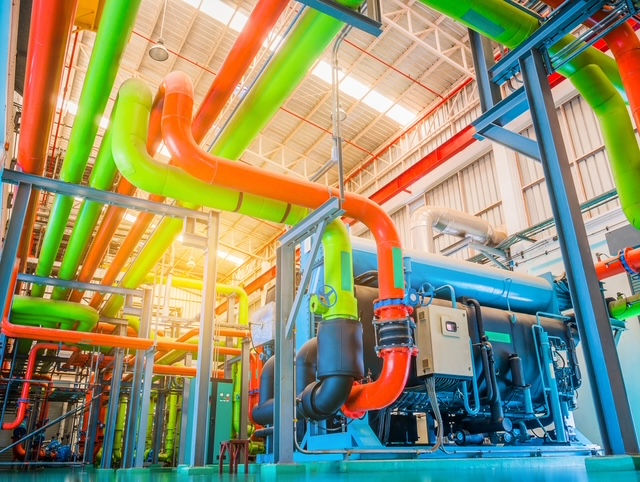Bearing Grease Selection
- Andrew Heilmann, PE
- Feb 25, 2022
- 3 min read
Updated: Sep 21, 2022
Bearing grease selection may not sound like the sexiest of topics, but its significance shouldn’t be taken lightly. According to bearing manufacturer SKF, 36% of bearing failures are caused by poor lubrication. The fallout from bearing failure can be disastrous – it can shut down an entire mission-critical system or process within minutes and cause serious collateral damage to shafts and fans. Repairs and replacements can be extremely costly and can take days, if not weeks, depending on the severity of the damage. So, with more than a third of all bearing failures being lubrication-related, grease selection is an important discussion to be had.

“Grease” is defined a solid or semi-solid lubricant comprised of a base oil, a thickening agent, and various additives for desired performance and viscosity. Different types of grease are graded by hardness on a numerical scale established by the National Lubricating Grease Institute (NLGI). Grease selection for a particular application cannot, however, rely solely on the NLGI consistency grade. Various other factors must be considered.
It’s important to understand the relationship between oil viscosity and thickeners when determining the type of grease to use in bearings. Equipment data plates and manuals might only state, “use a NLGI No. 2 grease of good quality”, but not every No. 2 grease can be used for a particular motor. Oil viscosity and thickness usually oppose one another, and determining the proper balance for the application relies heavily on speed and temperature. For example, a fast bearing needs a thin oil, but a stiff consistency. This is because a thinner oil can be carried and pumped at high speeds, whereas a thicker oil would build up heat due to the oil in shear. A stiffer grease consistency modifies the dropping point of the grease so that, at a certain temperature range, the oils are released.
Additives and thickeners are used to meet specific requirements – anticorrosion, antioxidant, anti-wear, extreme pressure (EP), etc. Common grease thickeners include lithium complex, aluminum complex, polyurea, clay, and calcium complex. It should be noted that molybdenum, a popular additive for EP applications, is excellent for impact-loading surfaces, but should not be used for bearings as it can alter metal characteristics and cause bearing failure.
The volume of grease needed for a specific application can be determined using physical dimensions. Multiplying a bearing’s outside diameter X width X 0.114 will yield how many ounces of grease it requires. Ideally, a bearing cavity should be filled to 40% for one-sided shielded or non-shielded bearings. Over-greasing can be just as detrimental as under-greasing as it can often result in blown seals, contamination, and increased temperatures. Different grease guns deliver varying amounts of grease, which service technicians must take into consideration during application.
For most critical bearing applications, MSC recommends Mobil Polyrex EM, a polyuria-based oil designed for use in electric motors as well as other roller element bearings. It provides consistent lubrication across a wide range of temperatures and is commonly specified by equipment manufacturers. Polyrex EM offers excellent cross-compatibility for various equipment including fan bearings and high-load applications.
Many companies adopt SOPs to minimize bearing failure and take preventive steps like installing vibration detection leads to facilitate quarterly inspections and bearing wear indicators to detect temperature rise and shut down the unit before critical failure can occur. Not many, however, take bearing lubrication into serious account. All Mechanical Service Corporation HVAC service technicians are fully-trained in bearing grease selection to protect against catastrophic bearing failure. For more information, contact MSC at 973-884-5000.




Comments